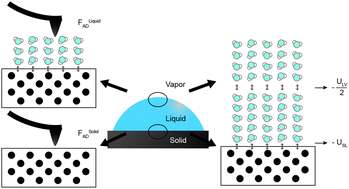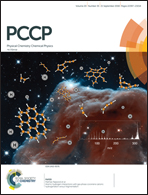The evolution in graphitic surface wettability with first-principles quantum simulations: the counterintuitive role of water†
Abstract
The surface wettability of graphite has gained a lot of interest in nanotechnology and fundamental studies alike, but the types of adsorptions that dominate its time resolved surface property variations in ambient environment are still elusive. Prediction of the intrinsic surface wettability of graphite from first-principles simulations offers an opportunity to clarify the overall evolution. In this study, by combining experimental temporal Fourier transform infrared spectroscopy, atomic force microscopy (AFM), and static contact angle measurements with density functional theory (DFT)-predicted contact angles and DFT AFM force simulations, we provide conclusive evidence to demonstrate the role played by water adsorption in the evolution of surface properties of aged graphite in ambient air. Moreover, this study has the merit of linking DFT-predicted adhesive energy at the solid/liquid interface and cohesive energy at the liquid/liquid interface with the DFT AFM-predicted force of adhesion through the Young–Dupre equation. This establishes the basis of the quantum surface wettability theory by combining two independent atomic-level quantum physics simulation methodologies.



 Please wait while we load your content...
Please wait while we load your content...